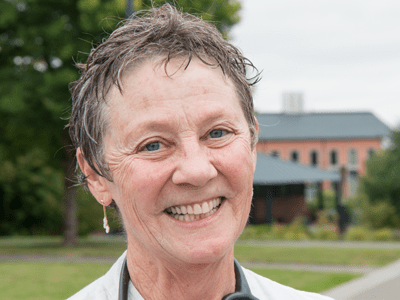When it was formed in 2012, the Healthy Living Collaborative had some start-up money from the federal Affordable Care Act and a simple but powerful idea: the health and well-being of local communities can be improved by working together across a broad spectrum of organizations.
So, some 42 local government, nonprofit, education and business entities interested in healthcare, housing and wellness came together to identify and strategize action to address some of the root causes of unhealthy behavior and the circumstances that perpetuate poverty and chronic illness.
“It was incredible,” said Kachina Inman, executive director of the collaborative. “At the very first meeting the passion and interest was very powerful. We realized we had a real opportunity and it just grew from there.”
Today, the collaborative, which operates in Clark, Cowlitz, Skamania and Wahkiakum counties, has an annual budget of $900,000 and focuses on active living, healthy eating, tobacco-free living and healthcare prevention measures. Funding comes primarily from the state department of health, county public health and human services agencies, Kaiser Permanente, PeaceHealth and the Free Clinic, with in-kind services donated by Pandora’s Box Publishing.
The group helped support a successful effort in the Washington Legislature to give cities the authority to reduce speed limits without engineering and traffic studies. In addition, the collaboration backed another successful bill that supports state efforts to coordinate plans to prevent childhood obesity.
They were not successful in securing funds from the Legislature for better drinking water in aging schools across the state, but will keep at it and may be able to address the issue in Clark County, said Inman.
Dawn Doutrich, associate professor of nursing at Washington State University Vancouver and a coalition member, said she’s been impressed that the heightened communication has reduced duplication of services and created a forum for creative ideas.
“It has been a remarkable process and a remarkable bunch of folks across the four counties,” she said.
One of those ideas, said Inman, is to apply a system of recruiting and training community health workers that has shown great success elsewhere in the country. The collaboration is focusing on three neighborhoods in the four-county area, reaching out to people who are well-grounded in the community, who know the problems there and where to go for help. Six workers who work 20 hours a week and receive a $200 monthly stipend are in place in Wahkiakum County now, with another 10-15 workers in training for work in Clark and Cowlitz counties.
Importantly, said Inman, the workers will have the freedom to determine which issues need the most attention in their area, whether it’s addressing housing instability for K-12 school children, unsafe parks or access to healthcare.
“We are looking for the natural helpers,” said Inman, “and trying to build on the strengths that already exist.”
The collaboration has raised about $300,000 for the program, according to Inman, who predicts some of the workers will be inspired to continue their training at one of the local colleges.
Said Doutrich, “It’s amazing what happens when people are connected. The ideas just start percolating.”




